Species Ecological

Can ecological protection areas help mitigate the impacts of climate change ?
Ecological protection areas can mitigate climate change impacts by carbon sequestration, habitat preservation, water conservation, soil erosion control, and nutrient cycling. These areas safeguard biodiversity, protect natural resources, and preserve ecosystem functions. They help reduce atmospheric CO2 levels, provide refuge for species adapting to changing environmental conditions, maintain stable water levels, filter pollutants from water sources, control soil erosion, and promote nutrient cycling processes. Supporting and expanding ecological protection areas is crucial for a sustainable future.

How does ecological design contribute to biodiversity and conservation efforts ?
Ecological design is a crucial approach to enhancing biodiversity and supporting conservation efforts. It integrates principles of ecology and sustainability into the built environment, aiming to minimize negative impacts on natural ecosystems while promoting their health and resilience. Ecological design contributes to these vital efforts by minimizing habitat destruction, promoting ecosystem services, enhancing connectivity, supporting conservation efforts, and implementing best practices. By integrating ecological principles into the built environment, we can create spaces that coexist harmoniously with nature, contributing to a future where both humanity and wildlife thrive.

How might climate change influence the distribution and abundance of aquatic species ?
Climate change significantly impacts the distribution and abundance of aquatic species by altering water temperature, pH levels, salinity, and oxygen availability. These changes affect habitats and life cycles of aquatic organisms, causing direct and indirect effects on their survival, growth, reproduction, and community interactions. Some species show resilience through genetic adaptation or phenotypic plasticity. Proactive conservation efforts are crucial for maintaining biodiversity and ecosystem health amid climate shifts.

How can ecological protection areas contribute to environmental education and awareness ?
Ecological protection areas are crucial for both biodiversity conservation and environmental education. These areas offer hands-on learning experiences, interactive programs, sustainable practice promotion, community outreach, research efforts, and media publicity to raise awareness about the importance of preserving ecosystems. Through these initiatives, ecological protection areas can inspire individuals to adopt eco-friendly habits and contribute to global conservation efforts.

What is the relationship between ecological protection areas and traditional knowledge and practices ?
Ecological protection areas and traditional knowledge and practices are interconnected, with the latter serving as a vital resource for conservation efforts. These areas often contain valuable traditional knowledge developed by indigenous communities, which can aid in their effective management. Traditional knowledge encompasses agricultural practices, medicinal plants, sustainable hunting and fishing techniques, and land management methods. Ecological protection areas aim to preserve biodiversity and ecosystem services through legal means like national parks and nature reserves. The intersection of these two realms offers benefits for both conservation and cultural preservation, encourages community engagement, and creates economic opportunities through ecotourism. Integrating traditional knowledge into conservation strategies can lead to more effective and culturally sensitive management of ecological protection areas while preserving the cultural heritage of indigenous peoples.

What are the impacts of global warming on ecosystems and species diversity ?
Global warming, primarily caused by human activities, significantly impacts ecosystems and species diversity. These effects include habitat loss, altered species interactions, the spread of invasive species, disease proliferation, ocean acidification, melting permafrost, changes in fire regimes, water stress, sea level rise, coral bleaching, increased extinction risk, shifting ranges, population declines, adaptation challenges, loss of genetic diversity, behavioral changes, phenological shifts, reproductive challenges, physiological stress, and disrupted mutualisms. Addressing these issues requires immediate action to reduce greenhouse gas emissions and adapt to the changing climate.

How can communities benefit from incorporating ecological design into their development plans ?
Incorporating ecological design into community development plans can enhance environmental sustainability, improve public health, bring economic benefits, and strengthen community cohesion.

What is the relationship between ecological design and green roofs/walls ?
Ecological design emphasizes sustainability and harmony with the environment, incorporating green roofs/walls for energy efficiency, stormwater management, habitat creation, air quality improvement, and aesthetic enhancement. These features require careful consideration of climate, building structure, water management, maintenance, energy efficiency, and habitat connectivity to ensure their success and alignment with ecological design principles.
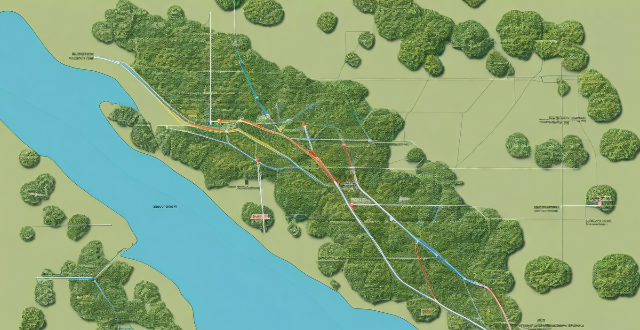
What are the legal frameworks and policies supporting the establishment of ecological protection areas ?
The establishment of ecological protection areas is supported by various legal frameworks and policies that aim to conserve biodiversity, protect ecosystems, and promote sustainable development. These frameworks and policies are essential for ensuring the effective management and protection of ecological protection areas. Some key legal frameworks and policies supporting the establishment of ecological protection areas include international legal frameworks such as the Convention on Biological Diversity (CBD) and the United Nations Convention to Combat Desertification (UNCCD), national legal frameworks such as National Biodiversity Strategies and Action Plans (NBSAPs) and national environmental policies, regional legal frameworks such as regional conservation agreements, and sector-specific legal frameworks such as forestry laws and regulations and wildlife conservation laws and regulations. When establishing ecological protection areas, it is essential to follow best practices such as conducting thorough scientific research, engaging local communities in the planning and management process, developing clear management plans, monitoring ecological protection areas regularly, and promoting sustainable tourism activities within them.
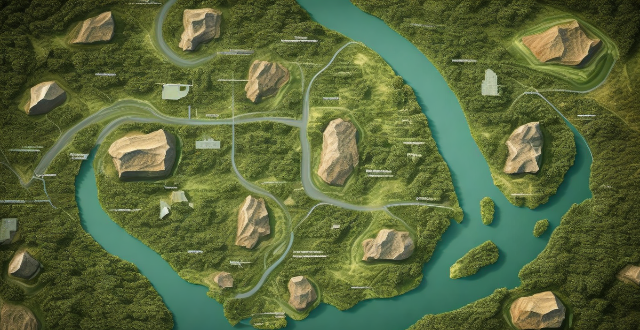
Can climate change cause extinction of certain species ?
Climate change has the potential to cause the extinction of certain species through a variety of mechanisms including rising temperatures, changes in precipitation patterns, loss of habitat, and disruption of food webs. It is essential that we take action to mitigate the effects of climate change and protect vulnerable species before it's too late.

How do invasive species affect biodiversity ?
Invasive species can have a significant impact on native biodiversity, both positively and negatively. They can outcompete and replace native species, leading to changes in community structure and ecosystem function. Invasive species can also cause damage to infrastructure and human health through the spread of disease or destruction of habitats. Management strategies for invasive species include prevention measures such as quarantines and biosecurity protocols, as well as control measures such as eradication programs and habitat restoration. It is important to consider the costs and benefits of each strategy when developing a management plan.

What are the consequences of climate change for wildlife and ecosystems ?
Climate change has significant consequences for wildlife and ecosystems, including habitat loss, changes in species distribution, impacts on biodiversity, altered ecological processes, invasive species spread, pest outbreaks, and human health risks. It is crucial to take action to mitigate these impacts by reducing greenhouse gas emissions and implementing conservation measures.

What is ecological design, and why is it important ?
Ecological design is a sustainable approach to architecture and engineering that aims to minimize environmental impact. It promotes the use of renewable energy, sustainable materials, and energy-efficient technologies, leading to reduced carbon footprint and conservation of natural resources. Economic benefits include cost savings, increased property value, and job creation. Socially, it fosters healthier living environments, community engagement, and educational opportunities. Ecological design also adapts to climate change by incorporating resilient infrastructure and water management systems. Finally, it promotes innovation through technological advancements, cross-disciplinary collaboration, and research opportunities.

How do ecological protection areas contribute to biodiversity conservation ?
Ecological protection areas contribute significantly to the conservation of biodiversity by preserving habitats, protecting endangered species, maintaining genetic diversity, mitigating climate change, and promoting education and awareness. These areas are crucial for the long-term survival of ecosystems and the diverse range of species that depend on them.

What role do protected areas play in maintaining biodiversity ?
The article discusses the importance of protected areas in maintaining biodiversity, highlighting their roles in habitat preservation, species protection, and ecosystem services. It also addresses the challenges of effective management, connectivity, and global cooperation for conservation efforts. The text emphasizes that protected areas are essential for safeguarding endangered species, supporting ecological processes, and mitigating climate change, but their success depends on balanced management, sufficient resources, and international collaboration.

Can you provide examples of successful ecological design projects ?
Ecological design is a concept that focuses on creating structures and spaces that are environmentally friendly, sustainable, and harmonious with their surrounding ecosystems. Here are some examples of successful ecological design projects: 1. The Bullitt Center in Seattle, USA 2. The Green School in Bali, Indonesia 3. The High Line in New York City, USA 4. The Gherkin Building in London, UK 5. The Living Building Challenge in various locations worldwide
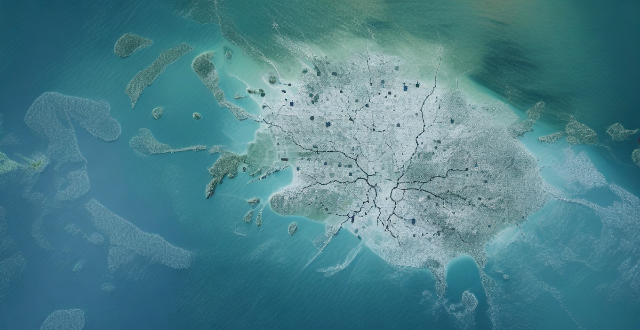
How is global warming impacting biodiversity and endangered species ?
Global warming is impacting biodiversity and endangered species through habitat loss, changes in weather patterns, and increased disease outbreaks. Habitat loss occurs as species are forced to migrate due to rising temperatures, leading to competition for resources and loss of habitats. Changes in weather patterns cause extreme events like droughts, floods, and storms, disrupting ecosystems and potentially leading to species extinction. Additionally, global warming contributes to the spread of diseases among wildlife populations, posing a threat to endangered species. It is crucial to take action to mitigate the effects of global warming and protect vulnerable populations.

What role do ecological protection areas play in sustainable tourism development ?
Ecological protection areas are vital for sustainable tourism, conserving resources and biodiversity while offering unique experiences to visitors. They also provide educational opportunities and support local livelihoods, promoting long-term sustainability and planetary health.
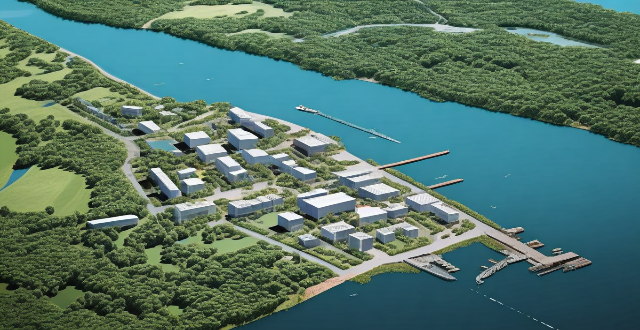
What are the benefits of establishing ecological protection areas ?
Ecological protection areas are vital for preserving biodiversity, mitigating climate change, and conserving soil and water. They also promote sustainable resource use, offer opportunities for ecotourism and environmental education, maintain cultural and spiritual values, provide economic benefits, and foster international cooperation. These protected zones contribute to global conservation efforts and demonstrate leadership in environmental stewardship, making them essential for the survival of species and the wellbeing of human communities reliant on natural resources.

What materials are commonly used in ecological design, and why ?
This article discusses materials used in ecological design, including recycled and reclaimed materials such as recycled metals, reclaimed wood, and glass; sustainable materials like bamboo, cork, and linoleum; and low-impact materials such as concrete, insulation, and sheep's wool. It emphasizes that ecological design prioritizes materials with minimal environmental impact throughout their life cycle.

What role does technology play in advancing ecological design ?
The text discusses the role of technology in advancing ecological design, which is an approach to architecture and urban planning that emphasizes the integration of natural systems and processes into the built environment. The author outlines various ways in which technology contributes to ecological design, including data collection and analysis, simulation and modeling, sustainable materials and construction methods, energy efficiency and renewable energy sources, water management and conservation, connectivity and automation, and community engagement and education. Overall, technology plays a crucial role in advancing ecological design by providing tools, data, and methods for understanding and enhancing the relationship between human activity and the natural world.

How do invasive species interact with climate change to threaten native biodiversity ?
Invasive species and climate change pose significant threats to native biodiversity by exacerbating range expansion, altering competition, increasing predation pressure, degrading habitats, facilitating disease transmission, disrupting mutualisms, having synergistic effects, depleting resources, displacing keystone species, and reducing ecosystem resilience. Integrated management strategies are crucial for mitigating these threats and include habitat restoration, invasive species control, protection of keystone species, and conservation of diverse genetic pools within native species to enhance their adaptability.

How effective are ecological taxes in reducing environmental pollution ?
Ecological taxes, also known as environmental or green taxes, aim to reduce pollution and promote sustainable practices by making polluting activities more expensive than environmentally friendly alternatives. The effectiveness of these taxes depends on factors such as tax rates, revenue use, public awareness, and international cooperation. Case studies show that carbon taxes, plastic bag taxes, and waste taxes can lead to reduced emissions and waste, but challenges include revenue neutrality, equity concerns, and the need for global agreements. To maximize their impact, ecological taxes should be part of a broader strategy that includes regulatory measures, public education, and support for green innovations. Recommendations for effective implementation include ensuring adequate tax rates, allocating revenue for environmental initiatives, increasing public awareness, protecting low-income earners, and fostering international collaboration.

How should we prioritize the protection of endangered species and ecosystems ?
The protection of endangered species and ecosystems is a critical issue that requires immediate attention. Here are some strategies we can employ to prioritize their protection: 1. Conduct comprehensive surveys and studies to identify and understand the current state of endangered species and ecosystems. 2. Develop effective legislation and policies, such as establishing protected areas, regulating hunting and fishing, and promoting sustainable development. 3. Raise public awareness and involvement through education programs, community involvement, and media campaigns. 4. Collaborate internationally by signing international agreements, sharing knowledge and resources, and coordinating conservation efforts. By taking these steps, we can work towards ensuring the survival of our planet's diverse flora and fauna for future generations.

What are the impacts of climate change on tree species diversity in forests ?
Climate change significantly impacts tree species diversity in forests through altered growth and reproduction patterns, range shifts, disturbance regimes, direct physiological effects, and changes in ecosystem services. These impacts not only affect the health and structure of forests but also have broader ecological and societal implications.

Are there any drawbacks to implementing an ecological tax system ?
The article discusses the potential drawbacks of implementing an ecological tax system, which aims to promote environmental sustainability by imposing taxes on activities that harm the environment. The drawbacks include economic impacts on businesses and consumers, administrative challenges, social and political implications, and potential environmental drawbacks. Businesses may face increased production costs and reduced profit margins, while consumers may experience higher prices and reduced spending power. Administering and enforcing ecological taxes can be complex and resource-intensive, with potential for evasion and avoidance. Public acceptance and support may be lacking if the taxes are perceived as unfair or if they disproportionately affect certain groups. Political feasibility can also be a concern due to lobbying by interest groups and electoral concerns. Environmentally, there is a risk of carbon leakage and ineffectiveness in reducing overall pollution levels without global cooperation. The article concludes that a balanced approach considering both benefits and drawbacks, along with complementary policies and global cooperation, will be essential for achieving sustainable development goals.
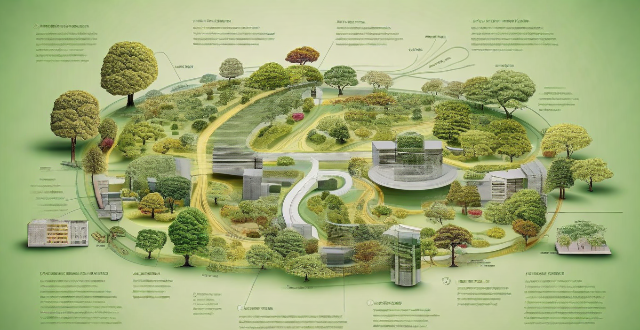
What is an ecological tax system and how does it work ?
An ecological tax system is a framework designed to promote environmental sustainability by modifying tax structures to encourage eco-friendly behaviors and discourage activities that harm the environment. The primary goal of such a system is to internalize the external costs of pollution and resource depletion, thereby making environmentally harmful practices more expensive and sustainable practices more economically attractive. At the core of an ecological tax system are Pigouvian taxes, named after the economist Arthur Cecil Pigou. These taxes are levied on activities that generate negative externalities, such as pollution. By imposing a tax equal to the marginal social damage caused by these activities, the government can correct market failures where the private costs to producers do not reflect the true social costs. This encourages polluters to reduce their emissions or shift towards cleaner technologies. In addition to taxes on negative externalities, ecological tax systems often include subsidies for positive environmental behaviors. For example, governments might offer tax credits or rebates for renewable energy installations, green technology adoption, or energy efficiency improvements. These incentives make it financially advantageous for individuals and businesses to adopt sustainable practices. An ecological tax system may also involve revenue-neutral tax reform, where increases in environmental taxes are offset by reductions in other taxes, such as income or payroll taxes. This approach aims to make the overall tax burden on society constant while encouraging environmentally friendly behaviors. Feed-in tariffs (FiTs) are another component of some ecological tax systems. These are long-term contracts guaranteeing renewable energy producers a fixed price for the electricity they feed into the grid. FiTs provide a stable income for renewable energy projects, reducing investment risk and promoting the development of clean energy sources. Carbon pricing mechanisms, such as carbon taxes or cap-and-trade systems, are integral parts of many ecological tax systems. These policies put a price on carbon emissions, making it more expensive for companies and consumers to use fossil fuels. This encourages a shift towards lower-carbon alternatives and supports investments in carbon capture and storage technologies. Some ecological tax systems apply differentiated taxes based on the environmental impact of products or services. For instance, gasoline taxes might be higher for fuels with a greater carbon content, promoting the use of cleaner burning fuels. Similarly, taxes on waste disposal could be adjusted based on the type of waste and its potential environmental harm. While the concept of an ecological tax system is straightforward, implementation faces several challenges: - Political Will: Governments must be willing to prioritize environmental concerns over short-term political gains. - Economic Impact: There's a need to balance environmental goals with economic growth and job creation. - Equity Considerations: Policies should not disproportionately burden low-income groups or exacerbate social inequalities. - International Cooperation: Many environmental issues are global, requiring coordinated international efforts. Despite these challenges, implementing an ecological tax system offers numerous benefits: - Environmental Protection: It directly addresses pollution and resource depletion. - Market Efficiency: It corrects market failures related to environmental externalities. - Innovation Stimulus: It encourages research and development of green technologies. - Public Health Improvements: Reduced pollution leads to better health outcomes. - Sustainable Economic Growth: It fosters industries that are sustainable in the long run. In summary, an ecological tax system is a comprehensive approach to integrating environmental considerations into fiscal policy, aiming to promote sustainable development through a mix of taxes, subsidies, and regulatory measures.

What is the relationship between climate change and loss of habitat for endangered species ?
Climate change is causing significant changes in ecosystems around the world, leading to the loss of habitat for endangered species. Rising temperatures, changing precipitation patterns, sea level rise, and extreme weather events are all factors that contribute to this loss. Endangered species are particularly vulnerable to these changes due to their small populations and limited ranges. Examples of endangered species affected by climate change include polar bears, giant pandas, leatherback turtles, and amphibians. It is essential that we take action to protect these species and their habitats, including reducing greenhouse gas emissions, conserving natural habitats, and developing adaptation strategies.

What is the relationship between biodiversity and ecosystem services ?
The text discusses the relationship between biodiversity and ecosystem services, emphasizing that biodiversity is crucial for maintaining the health and functionality of ecosystems. It highlights that diverse species contribute to ecological processes, and many ecosystem services rely on specific species or groups. High biodiversity can lead to more resilient ecosystems, while its loss can diminish these services. The text suggests that conservation efforts can enhance both biodiversity and ecosystem services, underlining the importance of recognizing and protecting this relationship for human well-being.